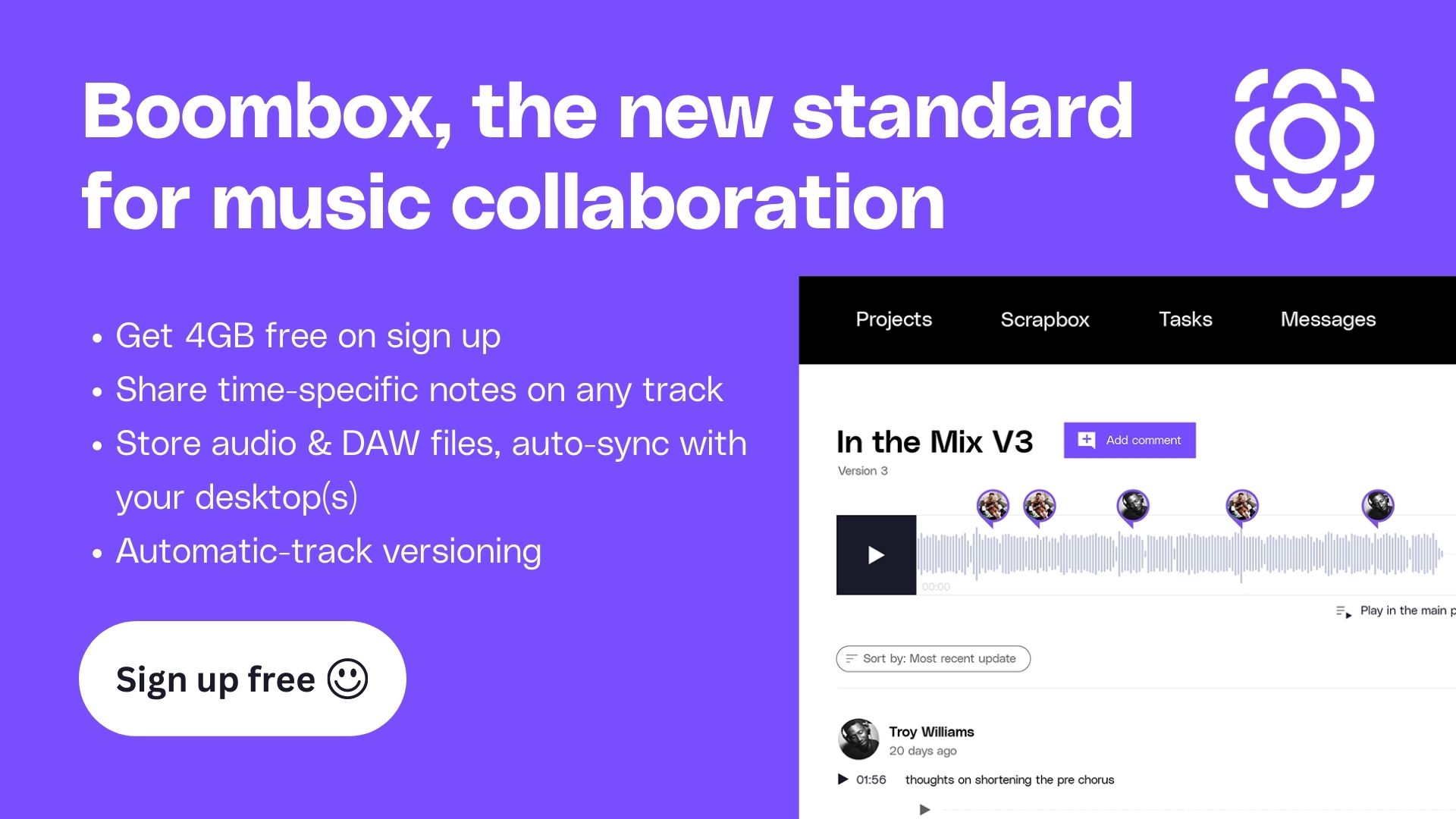As you probably well know, Logic Pro stands out as a powerhouse for both budding musicians and seasoned producers alike. This digital audio workstation (DAW) is renowned for its sophisticated features, intuitive interface, and a wide array of tools that can transform any musical idea into a work of art.
Whether you’re just starting out on a new DAW, or looking to refine your skills as a producer, this Logic Pro tutorial will give you more than just the basics. We’re here to deliver the tips and tricks that will not only enhance your workflow but also unlock new creative possibilities.
Remember, it’s not always about which DAW you choose, it’s about how well you know and understand it! Luckily we have Logic Pro tutorial wizard and producer extraordinaire Fabio from Noize to give us some of the best insider tips and shortcuts to help you elevate your audio tracks to new heights.
Let’s get into it!
Logic Pro Tips to Speed up Your Computer
We’ll start by opening our Logic settings > Audio. Here there are a few things that you can do to make Logic run just a little faster.
The Processing Threads is usually set to Automatic, but we recommend setting it to whatever the highest possible number is. In our case it’s 10 with 8 High Performance Cores. We’d also leave the Process Buffer Range at Large.
When it comes to the buffer size, you also want this as high as possible. Bigger is better here unless you’re recording vocals, in which case you actually want a lower buffer size. This will help reduce the amount of latency. If you’re not familiar with latency, it’s when you get a delayed signal between the input through the microphone or instrument, and what’s coming out of your monitoring system—speakers, headphones, etc. For vocals, you’ll want your buffer size around 128 or even 64.
If you still happen to experience some latency, right-click up at the top of your screen in the gray bar, then click on Customize Control Bar and Display. Under Modes and Functions, you want to be sure that Low Latency Monitoring Mode is switched on. After this, the speed dial icon will show up (check the video example to see what this looks like). Then just click on it to engage Low Latency Monitoring.
If you’re playing back tracks that have a lot of processing, you can right-click on the channel, scroll down to Track Header Components, go to Freeze, and you’ll notice that a snowflake symbol shows up in the channel strip. When you turn this on and press play, it will render that channel as audio and turn all of your plugins off. So any effects you currently have on that channel will not be editable unless you unfreeze it.
Because this disables the plugins and plays just the rendered audio, it saves your computer a lot of processing power.
Another reason why your computer is running slow may be because you have a lot of effects and plugins open on channels. Take a look at our master bus in the video. There are a lot of processor-heavy plugins here, and some of them we aren’t even using. But going through them one-by-one is a bit tiresome. So to make things simpler, you’ll head up to the top menu bar, and you’ll see that you can select Remove Bypassed Plug-ins. This takes care of it in one step.
Alternatively, if you want to get rid of them all at once, you can select Reset Channel Strip.
Another time-saving tip if you have a lot of effects or plugins that you use regularly and in a specific order, click again on that menu button above the channel strip and select Save Channel Setting Strip as… Then here you can name and save your sequence of effects that you tend to use the most. You can then access these any time from the User Channel Strip Settings.
Fast Recording
Let’s turn on the low latency button like we mentioned before. You should notice that when you record enable a channel, some of the effects turn orange. This is because Logic recognizes that these plugins will create latency while recording. This is obviously a nightmare for any vocalist or instrumentalist who tries to sing or play in time.
But on this Send in our video example we have a reverb that we want to be able to hear. So you’ll click and hold, and select Low Latency Safe. This allows us to have the Send and use the reverb while recording.
If you have a take set up and you just want to record over a certain section, you have two options. One is punching in. Make sure it’s record enabled, hit the Spacebar, and when you’re ready to record, hit “R.”
The other option—which is a bit more accurate, and the one we prefer—is using the Marquee tool. Make sure you have this tool set up as your Command-click tool. When you hold Command, you can click and drag with the Marquee tool over the section that you want to record. Then all you need to do is press Record.
Essential Music Production Tools
Friendly reminder that as these tips make your music production life easier, so does Boombox!
You can create projects, add collaborators, and receive time-stamped feedback via text or voice notes. This saves you a lot of time trying to scramble to find notes in emails, WhatsApp, text, etc. You can also quickly and easily share your files, create playlists, and we’re now just starting to build out our Network artist profiles.
This will soon be a great space for artists in the online community to engage with one another and with fans. As a musician, producer, or engineer, you’ll be able to easily sell your services, but most importantly, it’s an awesome place to connect, collaborate, and take your tracks to the next level by working with new talent.
You can get 4GB for free when you sign up today, or you have the opportunity to upgrade to a higher-tier as low at $2.99/month with as much as 200GB of storage.
Logic Pro Channel EQ Secrets
If you’re a fan of Logic Pro X, then you’re probably a big fan of the Channel EQ. We all know that you can boost and cut with the bells and shelfs, etc. But, if you actually click on one of these frequency points, this will select the Band, and this will give you access to a few more tools.
If you hover over the horizontal line in our example, you can click and drag up and down for just the Gain. And then if you go to the end of the line, you get these four arrows that form a diamond shape. This will allow you to adjust both frequencies. If you hold Option+Command you can simultaneously adjust both the Q and the frequency point.
The Analyzer also gives us a few options. If it’s in Post, then you’ll be seeing the changes to the frequencies after any EQ changes that you’ve made. On the other hand, you have Pre which shows you the frequencies before any changes are made to the EQ.
If you right-click on the Analyzer, you’ll also have two modes: Peak, which is its default, and RMS. You can also play with the resolution settings. You’ll notice though that the signal coming through is pretty quiet. We can’t exactly see all the frequencies. No matter, for we have yet another hack!
If you click and drag on the left hand side of the EQ and drag up or down, you can actually move where the Analyzer sits. This allows you to see all the frequencies, even if they’re super low in volume.
One of our other favorite things about the Channel EQ is that even if you decide, after all those changes, that you want to switch to a Linear Phase EQ, you can do so without having to reconfigure your parameter changes. This is just by selecting the Linear Phase EQ, it will switch to that mode and keep everything that you’ve already done.
Logic Pro Bonus Tip!
This is another shortcut that likely not many people know about, and it saves so much time. This is the Reset to Parameter default. All you need to do for this is to hold Option and click. For anything that belongs to Logic such as the panning, metering, or really any of their plugins will automatically reset to its default parameter value—usually zero.
This is super useful when you have a Send and you just want to turn it all the way up.
Logic Pro X Regions
An easy way to nudge parameters on your audio files to the left or right is to hold Option, and then pressing the left or right on the d-pad. If you hold Option and then press up or down, you’ll notice on the region window that it starts to read +5, +6, and so on. What you’re actually doing here is transposing up and down in pitch. But let’s come back to nudging for a moment.
You can adjust your nudge value by right-clicking, going to Move, and then ‘Set Nudge Value to’. It’s currently set to a Bar, but you can set it to any of the various steps listed that might work better for you.
When it comes to dragging regions of audio recordings over one another, you’ll notice that it typically just cuts out the other one. However, if you use the Drag menu up at the top, you have a few helpful options. The one you’re most likely to use is X-Fade. This will create an equal-power crossfade and its size depends on how much you drag one region over the other.
Many Logic Pro users like to loop their regions by going to the top right-hand corner and using the loop function. Or, alternatively, you can press ‘L’ on your keypad. However, we’ve always found this to be a bit messy and inaccurate, especially if the regions don’t line up exactly to the bar.
Our preferred method is to use the Marquee tool, select the section that you want to repeat, and then hit Command+R. This way you can repeat the region accurately as many times as you need.
Logic Pro X Tutorial Lifesaver
A very cool thing that Logic has is the ability to do is go into other projects and copy/paste settings. From the right-hand panel you can browse files from your hard drive. You can then open up a project and it will show you the different auxiliary channels that you have set up.
From there you can add those auxiliary channels to your project by selecting them and pressing ‘Add.’ Within our project we can see the kick, bass, and drums-all channels with the plugins from the other project have now been added to my current one.
This keeps you from having to close the current project and open the other one in order to copy your project settings. This is another definite time saver for professional producers, audio engineers, or any audio track editor who wants to be more efficient in their workflow.
* * *
And there you have it! Don’t forget that you can sign up for Boombox entirely free right here!
This is Boombox: The Home of Collaboration

